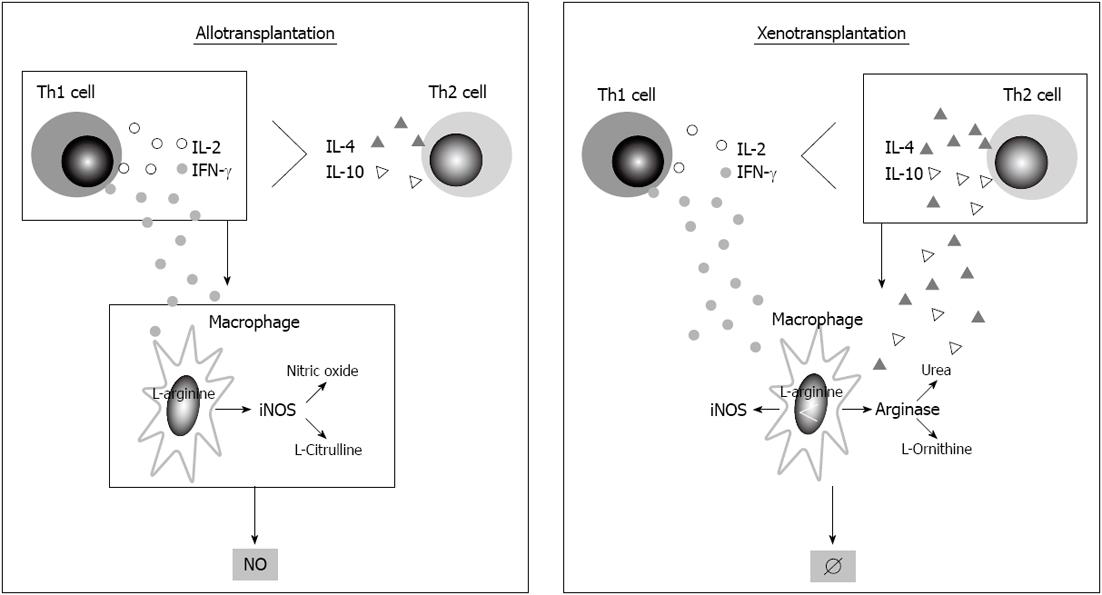Copyright
©2013 Baishideng Publishing Group Co.
World J Transplant. Dec 24, 2013; 3(4): 54-61
Published online Dec 24, 2013. doi: 10.5500/wjt.v3.i4.54
Published online Dec 24, 2013. doi: 10.5500/wjt.v3.i4.54
Figure 1 The distinct cytokine production profiles that are induced during allograft or xenograft rejection differentially regulate the expression of the genes for the enzymes inducible nitric oxide synthase and arginase.
During allograft rejection, high levels of interleukin (IL)-2 and interferon (IFN)-γ and very low amounts of IL-4 and IL-10 are produced. The proinflammatory cytokine IFN-γ stimulates the expression of the gene for inducible nitric oxide synthase (iNOS), and significant NO generation can be observed in rejected allografts. In contrast, the rejection of xenografts (or allograft tolerance) is associated with the high expression of the genes for the Th2 cytokines IL-4 and IL-10, in addition to the production of Th1 cytokines. Both iNOS and arginase are formed during xenografft rejection. Arginase successfully competes with iNOS for L-arginine as a common substrate. As a consequence, the availability of L-arginine for iNOS becomes limited, and little or no NO generation can be detected in rejected xenografts.
- Citation: Holan V, Krulova M. Common and small molecules as the ultimate regulatory and effector mediators of antigen-specific transplantation reactions. World J Transplant 2013; 3(4): 54-61
- URL: https://www.wjgnet.com/2220-3230/full/v3/i4/54.htm
- DOI: https://dx.doi.org/10.5500/wjt.v3.i4.54









